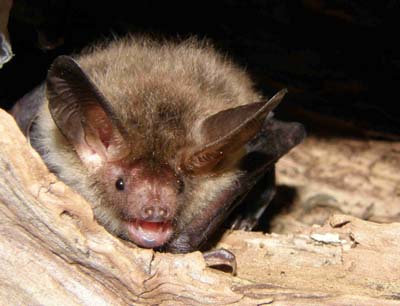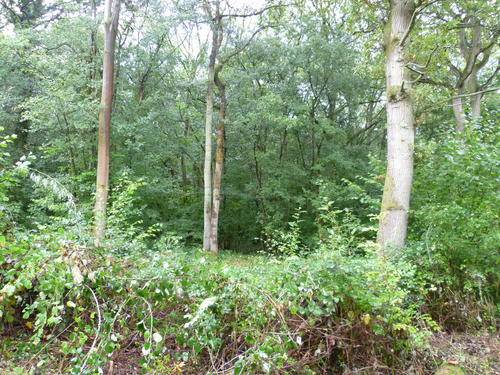Bechstein’s Bat – the national survey comes to Worcestershire
James Hitchcock
The Bechstein’s Bat Myotis Bechsteinii project is part of the National Bat Monitoring Programme which began in 2007. The project aims to survey woodlands in Southern England and South Wales over a four year period using a new trapping technique. The project works with local bat groups to help with the surveys. Gathering useful information on the bat’s range and its habitat preferences are a key objective of the survey.
Bechstein's Bat is one of the rarest mammals in the UK, and a UK Biodiversity Action Plan priority species (Bat Conservation Trust). It has proven difficult to detect in previous attempted surveys as it rarely leaves the canopy of its favoured broadleaf woodland habitat. The current survey is the first time that anyone has attempted to map its distribution and to obtain information to inform woodland management.
Frank Greenaway and David Hill, who are leading Bat researchers, have developed and tested a technique to relay ultrasonic social calls to locate Bechstein’s Bats. The project is relying on the involvement of experienced, specially trained volunteers recruited through the local bat group network, and the support of landowners and woodland managers.
The plan is to survey four or five counties or areas during each year of the project. The 2009 survey focused on Cornwall, Devon, Dorset, Kent, Oxfordshire and Surrey.
In 2010 the project came to Worcestershire - along with Gloucestershire, North Buckinghamshire and Somerset - with the local Worcestershire bat group surveying 15 woodlands around the county, catching 101 bats of nine different species. In total six Bechstein’s were caught at three different sites (Records from Jane Sedgley; Worcestershire Bat Group) in the county, one of which, Grafton Wood, is owned and managed by Worcestershire Wildlife Trust (WWT) and Butterfly Conservation (BC). Another site is Romers Wood, owned and managed by Herefordshire Nature Trust. The third site is not being named as it is in private ownership and has no public access.
In Britain the last population estimate for Bechstein’s Bat in 1995 put the pre-breeding number at just 1500 (Bat Conservation Trust). The UK is currently on the northerly edge of the known breeding range. Bechstein’s are most often associated with broadleaved woodland, needing at least 25 hectares to support a nursery colony. Mature trees between 80-120 years of age are required along with a good supply of old woodpecker holes where the bats set up their roosts. They feed by hawking and gleaning. Its low population density combined with an exacting set of habitat requirements make it particularly vulnerable to habitat loss.
The records gathered from this work are currently the most northerly that are known for the species. Because of this further survey work is being planned by WWT and BC to try and identify which areas of Grafton Wood are being used by the bats. We also hope to try and identify other woodlands in the surrounding area that are inhabited and ascertain if they are important in supporting the local population. The national survey only allowed one woodland per 10km square to be visited so there is certainly scope for visiting woodlands around Grafton Wood, such as Trench Wood. The work will hopefully be done as part of the national project through the Worcestershire bat group but it is likely that any radio tracking to identify roosts will be carried out by paid consultants funded by the Trust. We are delighted to find the Bechstein’s in our woodland and are currently working through the management guidance literature to ensure that we take account of the habitat requirements of this species during forestry work.
Images
Fig. 1. Bechstein’s bat. Picture © Derek Smith, ©Derek Smith.
Fig. 2. Grafton Wood showing habitat favoured by Bechstein’s Bat. Picture ©James Hitchcock.

